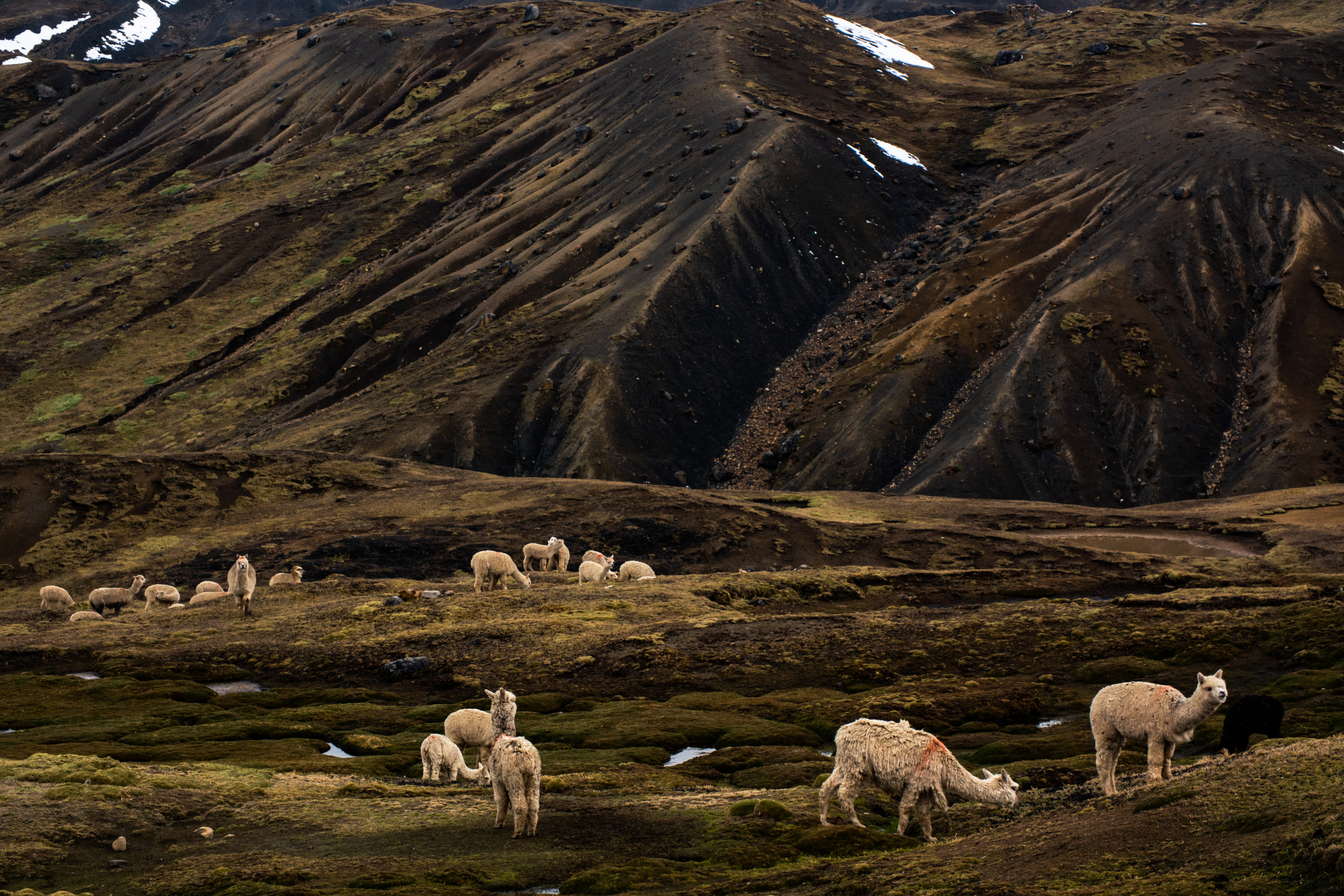By Manuel Mavila, GEF Small Grants Programme - Peru
Connecting knowledge for water resilience in the Andes
15 de Septiembre de 2023

The impacts of climate change in the Peruvian Andes have caused the loss of half of the glacier surface between 1985 and 2021, according to Instituto del Bien Común - MapBiomas. These natural reservoirs are no longer able to store the amount of ice needed to release enough water during the dry season, affecting both agricultural and livestock activities, as well as wildlife.
These climatic conditions, which cause the degradation of ecosystems and the services they provide, affect the resilience of rural communities in the Andes. In addition to being socioeconomically vulnerable, small farmers are experiencing droughts since 2022 and are facing an imminent El Niño phenomenon that will aggravate this situation.
The Chillca Peasant Community is an ancestral pastoral community located southeast of the Ausangate glacier, in Cusco. They raise alpacas and lamas for living; therefore, they depend on water sources for ensuring quality of pastures and wetlands in their territory. Over the last decade, this complex interaction between water, soil and vegetation has been impacted by glacier loss, climate variability and socioeconomic changes.
To face the challenges, the Chillca Community along with the Association for the Conservation and Study of Andean-Amazonian Mountains (ACEMAA) are developing a strategy that comprehensively addresses the needs of the pastoral use system. On the one hand, information is generated on the eco-hydrological dynamics (water, soil, vegetation) of the watershed headwaters and, on the other, best practices in the ecosystems are promoted to improve ecosystem services. For example, the provision of water and forage, essential for the economic activities carried out in the basin.
To understand the relationship between water, soil, vegetation cover and ecosystem management, a "Participatory Ecohydrological Monitoring System" SMEHP- Chillca has been established with an integral approach to facilitate and promote the co-construction of knowledge and nature-based solutions. The SMEHP Chillca covers an area of 25,000 hectares of the headwaters of the Pitumarca watershed. The system consists of 14 monitoring stations, distributed in 8 micro-watersheds; at each station, automatic and manual recording instruments have been installed to measure the main variables of the ecohydrological cycle, such as precipitation, stream flow and the dynamics of surface and groundwater flow in wetlands (bogs). Biodiversity is also studied, and the forage potential of the pastures is evaluated, together with the grazing dynamics, to estimate the livestock carrying capacity that considers the sustainable use of these ecosystems.
The second pillar of the initiative is the strengthening of the community organization system for the integrated management of the territory. This initiative has contributed to recovering ancestral practices such as the "ayni" (a system of collective and voluntary work) for the implementation of water, pasture and wetland management practices, promoting social agreements for the sustainability of the watershed.
In this way, local knowledge - both ancestral and recent – connects with current technologies, in order to improve the pastoral use system and lay the foundation for the establishment of a mechanism of retribution for ecosystem services. All of this contributes to the sustainable management of more than 7,500 hectares, and the improvement of the livelihoods of more than 60 high Andean families.
This local initiative in the Pitumarca watershed contributes to the achievement of the Sustainable Development Goals (SDGs). In contributes to SDG 13 "Climate Action", by strengthening resilience and adaptive capacity to climate-related risks. To SDG 15 "Life on Land", by ensuring the conservation, restoration and sustainable use of terrestrial ecosystems and the services they provide. It also contributes to SDG 6 "Clean Water", with the goal of protecting and restoring water-related ecosystems, including forests, mountains, wetlands, rivers, among others, as well as strengthening the participation of local communities in improving water management.
This experience is one of 24 community projects of the Global Environment Facility Small Grants Program (SGP) in the Peruvian Andes. The SGP is implemented under the leadership of the Peruvian Ministry of Environment (MINAM) and with the support of the United Nations Development Programme (UNDP), providing technical and financial assistance to community and civil society organizations to conserve biodiversity, mitigate climate change and prevent land degradation. Thus, promoting innovation and resilience from a local perspective in the most vulnerable regions.
* Text with contributions from Dina Farfan and Jan R. Baiker (ACEMAA).
Allies: Chillca Peasant Community, National University of San Antonio Abad in Cusco, Pontificia Universidad Javeriana - Bogota (Colombia).

 Locations
Locations

